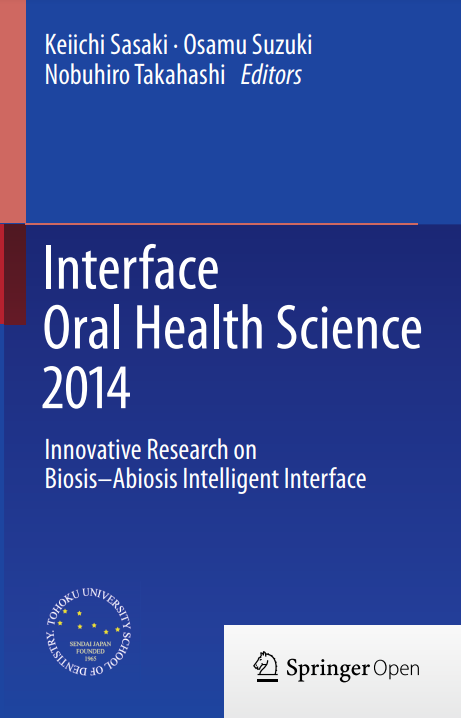Interface Oral Health Science 2014
Editorial: Universidad de Chile
Licencia: Creative Commons (by-nc-nd)
Autor(es): Sasaki, Keiichi; [et al.]
Electrospun nanofibers have tremendous potential as novel scaffolds for tissue engineering of various soft and hard tissues because of thier high surface area, surface functional groups, interconnected pores, and nano-scaled size. In this chapter, we reviewed the types of the nanofibrous scaffolds that have been used as implantable biomedical devices and used electrospun nanofibrous guided tissue
regeneration membrane as an example to illustrate how the physiochemical properties of nanofibrous scaffolds influenced the biological events occuring on the scaffolds-host interface. It could be concluded that physical and chemical stimuli caused by nanofibrous scaffold would support in vivo-like three-dimensional cell adhesion and activate cell-signaling pathways. In terms of physical stimulus, the
process of mechanotransduction may play an important role in influencing cellular behaviors. A result, biological events such as cell-interface recognition, cell proliferation, and cell differentiation are altered. Nevertheless, the cellular and molecular mechanisms by which cells sense and respond to nanofiberous scaffolds remain poorly understood.
[Cham: 2015]
Compartir:
Una vez que el usuario haya visto al menos un documento, este fragmento será visible.


